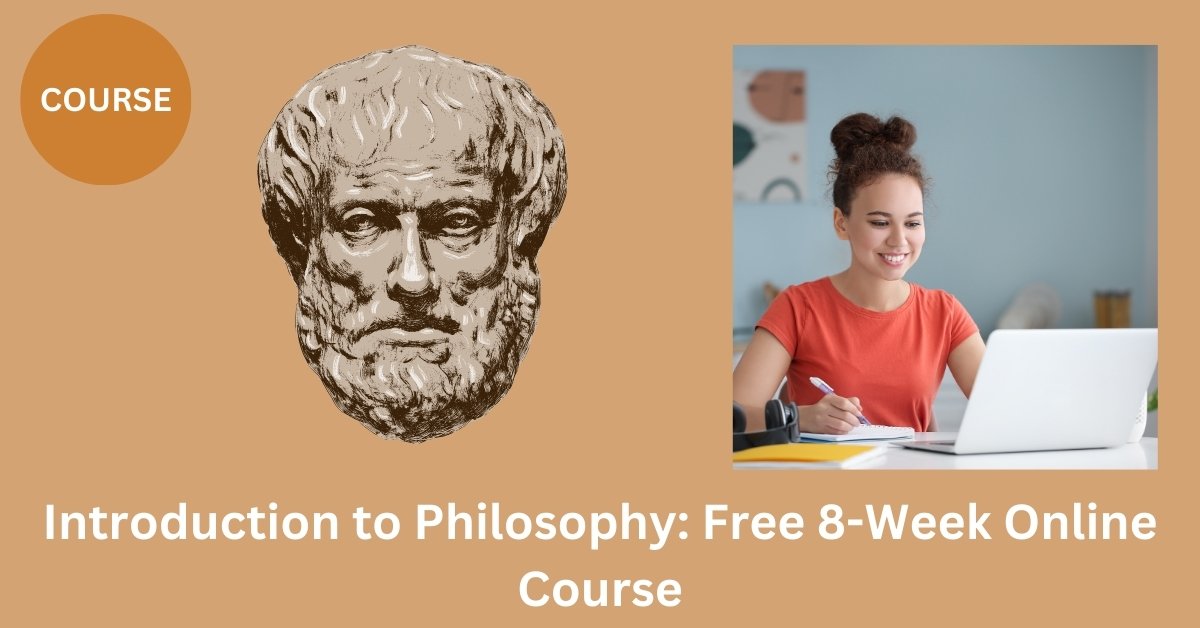Philosophy often serves as a guiding framework for those seeking a deeper sense of purpose and meaning in life. Among the many influential philosophical ideas, Kierkegaard’s concept of the double movement of faith holds a vital place. Understanding this idea is crucial to fully appreciating his philosophy and its significance in leading a more meaningful life. This article will examine Kierkegaard’s philosophy, unpack the double movement of faith, and explore how these insights can enhance our philosophical approach to creating a more purposeful existence.
Key features of Kierkegaard’s philosophy
Søren Kierkegaard, often called the father of existentialism, focused on the individual’s experience and the importance of personal choice and responsibility. A key theme in his philosophy is the concept of subjectivity, which emphasizes that truth and meaning are highly personal and often differ from one individual to another. Kierkegaard believed that life’s most crucial questions, such as the search for meaning and faith, cannot be answered through objective reasoning or societal rules but require a deeply personal, subjective approach.
He introduced the idea of life stages, which he categorized as the aesthetic, ethical, and religious. The aesthetic stage focuses on pleasure and personal satisfaction, while the ethical stage is about living responsibly and morally. The final stage, the religious, involves a leap of faith – a commitment to God and spirituality that goes beyond rationality. This “leap of faith” is one of Kierkegaard’s most well-known ideas, highlighting the need to embrace uncertainty and make bold, personal choices in pursuit of a meaningful life.
Kierkegaard also critiqued societal conformity, warning that blindly following the crowd could lead to a loss of individual authenticity. He argued that self-awareness and personal reflection are essential for living genuinely. Ultimately, his philosophy invites individuals to take ownership of their lives, confront difficult truths, and strive to live authentically and with purpose.
What is double movement of faith?
Søren Kierkegaard introduced the concept of the double movement of faith in his exploration of faith and existence. According to Kierkegaard, faith involves two distinct but interconnected movements. The first movement is the movement of resignation, where an individual acknowledges the impossibility of achieving something within the limits of human capability. This requires letting go of personal desires, surrendering them completely, and accepting the limits of the finite world. It is a step toward detachment, where one finds peace in accepting that certain outcomes or goals are beyond their control.
The second movement is the movement of faith itself, which follows the act of resignation. This movement is characterized by a leap into belief—a trust in the infinite or divine that transcends reason and the limitations of the finite world. Kierkegaard emphasizes that this leap goes beyond mere acceptance and requires a profound sense of hope and trust that what seems impossible may still become possible through the power of the divine. Ultimately, the double movement of faith reflects a paradoxical balance between letting go of control and simultaneously believing in a higher possibility beyond human understanding.
The example below demonstrates this philosophical perspective. A well-known illustration of Kierkegaard’s view on the double movement of faith can be seen in the story of Abraham. According to the biblical account, God commands Abraham to sacrifice his son, Isaac, on Mount Moriah. Despite the profound anguish this demand causes, Abraham accepts it as a test of faith. He prepares to carry out the sacrifice, fully surrendering his own desires and reasoning to obey God’s will. However, Abraham holds onto the belief that God will somehow fulfil His promise to make Isaac the father of a great nation. At the last moment, God intervenes and provides a ram as a substitute for Isaac. Abraham’s actions reflect a paradoxical trust in divine authority and an unwavering hope, embodying the complexity of faith as both surrender and expectation. This story captures the tension and depth inherent in Kierkegaard’s philosophical narrative.
Challenges to Kierkegaard’s view about double movement of faith
Some philosophers object to or reject Kierkegaard’s view about the double movement of faith because they find it either logically inconsistent or practically unrealistic. A key concern is how the concept challenges traditional notions of rationality. Many philosophers, particularly those aligned with rationalist traditions, argue that faith and reason should complement each other. Kierkegaard’s focus on faith potentially requires suspending rational understanding, which some critics see as a dangerous move. They worry that such an approach undermines the role of reason in guiding ethical and moral decisions, creating a framework that could justify irrational or morally questionable behavior.
Others argue that Kierkegaard’s view places an overly individualistic burden on the believer. Philosophers critical of this aspect highlight that the framework seems to require an intensely personal and subjective leap of faith, which may not be accessible or meaningful to everyone. This subjectivity could exclude those who rely more heavily on communal or shared forms of understanding, including religious practices grounded in tradition and collective faith.
Additionally, some object on the grounds that the view seems to glorify suffering or inner conflict, presenting faith as something almost unattainably complex. Critics suggest this makes faith seem less like a source of hope and more like an exclusive club for those capable of achieving profound existential struggle. They argue that this perspective can alienate people by implying that faith is only legitimate if accompanied by deep anguish and doubt, overlooking the simplicity or joy that many feel in their religious lives.
Finally, some philosophers take issue with the lack of practical guidance in Kierkegaard’s view. They feel the abstract nature of his ideas doesn’t provide clear, actionable steps for how one should engage with faith in day-to-day life. This leaves room for interpretation, which critics argue could lead to misunderstandings or misapplications of his philosophy. For these reasons, while Kierkegaard’s perspective is celebrated for its depth, it is often questioned for its practicality and accessibility.
Why double movement of faith is important to Kierkegaard’s philosophy
Understanding the concept of the double movement of faith is essential for grasping the core of Kierkegaard’s philosophy.
- Focuses on Individual Experience
Kierkegaard’s philosophy places a strong emphasis on the individual’s personal experience and responsibility. The double movement of faith underscores the idea that faith is not merely an external practice but an inward, deeply personal process. This focus is important because it highlights the unique and subjective nature of each person’s relationship with faith or belief, encouraging self-reflection and authenticity. It asks individuals to confront their inner thoughts and emotions, fostering a deeper understanding of oneself. By centering on the personal experience, this concept challenges societal norms and expectations, promoting a sense of individuality and personal growth.
- Illustrates the Tension Between the Temporal and the Eternal
The double movement of faith helps to show the coexistence of earthly, temporal concerns and eternal, spiritual realities. It is significant for understanding Kierkegaard’s philosophy because it reveals the complexity of human existence. People must live in the finite world, dealing with everyday realities, while also striving for spiritual or eternal understanding. This tension encourages individuals to find balance and meaning between these two dimensions of life. It serves as a reminder of how personal growth often involves holding seemingly contradictory ideas together, allowing for a fuller view of existence.
- Highlights the Role of Paradox in Faith
Faith, according to Kierkegaard, involves accepting paradoxes that cannot be fully explained by reason. The concept of the double movement of faith illustrates this idea by showing the leap required to trust in the uncertain. This is important because it challenges the idea that all knowledge or understanding must be rational. Instead, it invites people to acknowledge the limitations of human reasoning and to approach faith with humility and openness. This focus on paradox encourages a rethinking of certainty and opens up space for belief beyond strictly logical constraints.
Contrasting Kierkegaard’s philosophy with Aristotle’s philosophy
Kierkegaard’s concept of the double movement of faith marks a significant departure from Aristotle’s philosophy. Aristotle’s approach is rooted in reason and the pursuit of virtue through rational thought. Aristotle believed that achieving eudaimonia, or human flourishing, required a balanced life where virtues like courage, wisdom, and justice are developed through practice and reasoning. His philosophy emphasizes the role of logic, observation, and human capacity to comprehend the world to guide ethical living.
Kierkegaard, however, shifts the focus away from reason as the ultimate path to meaning and fulfillment. The double movement of faith suggests a paradoxical approach where an individual relinquishes finite, worldly attachments but simultaneously regains them through faith in something beyond human understanding. Unlike Aristotle’s reliance on rationality, Kierkegaard’s ideas emphasize a leap into the unknown and the acceptance of something that cannot be fully explained or grasped through logic. This leap of faith contrasts sharply with Aristotle’s methodical cultivation of virtue.
While Aristotle’s philosophy is structured and grounded in observable human experience, Kierkegaard challenges this certainty, introducing the idea that true meaning may require stepping beyond limits of reasoning. This divergence highlights a key difference in their approaches to understanding life and human purpose—where one champions reason, the other elevates faith and subjectivity.
Double Movement Of Faith, Kierkegaard’s philosophy and the philosophy of life
Reflecting on Kierkegaard’s philosophy, specifically his view about the double movement of faith, is a valuable exercise when developing your own philosophy of life because it challenges you to think deeply about commitment, uncertainty, and the pursuit of meaning. Life is filled with paradoxes and choices that require us to act with courage and conviction despite uncertainty or doubt. Whether or not you agree with Kierkegaard’s perspective, considering his ideas can inspire you to evaluate how you approach faith, trust, and your relationship with the unknown.
When formulating a personal philosophy, it’s helpful to grapple with questions about what you are willing to believe in or commit to, even when evidence, certainty, or guarantees are absent. Kierkegaard’s philosophy encourages you to think seriously about the process of navigating these difficult decisions. It invites you to reflect on the significance of taking risks based on inner convictions—whether you think about those convictions in terms of religious faith, personal relationships, or long-term goals in life. The practical takeaway here is that developing a deeper understanding of your own values and beliefs can help you live more authentically, regardless of whether your conclusions align with Kierkegaard’s ideas.
Furthermore, reflecting on a concept like the double movement of faith sharpens your ability to deal with the complexities of life. Many situations in life require an interplay of surrender and action, of letting go and holding on. These moments can shape who you are and how you ultimately define a meaningful existence. By exploring such nuanced ideas, you cultivate a sense of introspection and resilience which can be applied to everyday challenges, helping you grow not just as a thinker, but as an individual striving to live with intentionality and purpose.
Ultimately, engaging with Kierkegaard’s philosophy is not about agreeing or disagreeing with his ideas; rather, it’s about using his thoughts as a tool to better understand yourself and your life. His works prompt you to clarify what truly matters to you and to consider how you face life’s uncertainties. This process of reflection is essential for anyone seeking to build a personal philosophy that is both thoughtful and meaningful.

